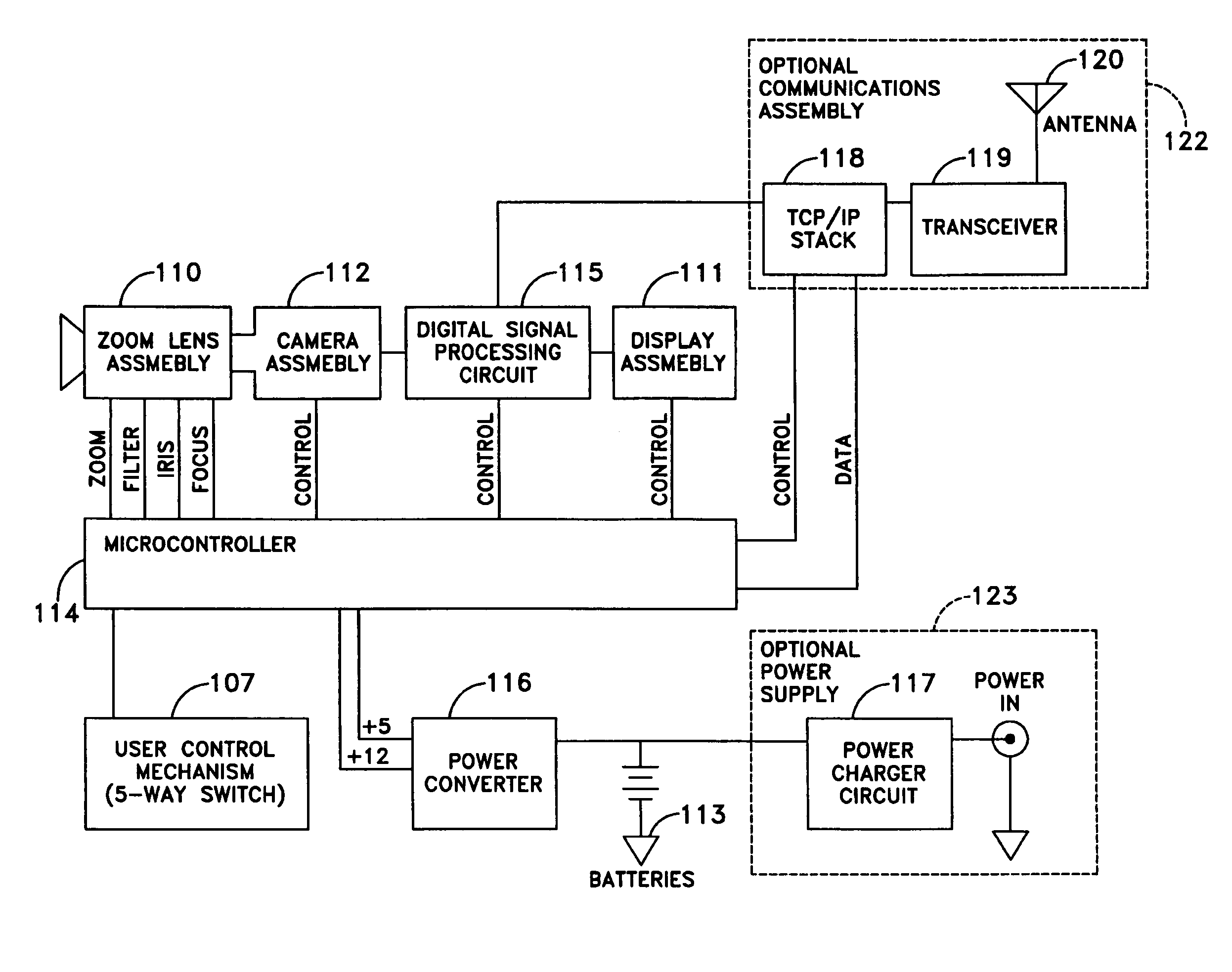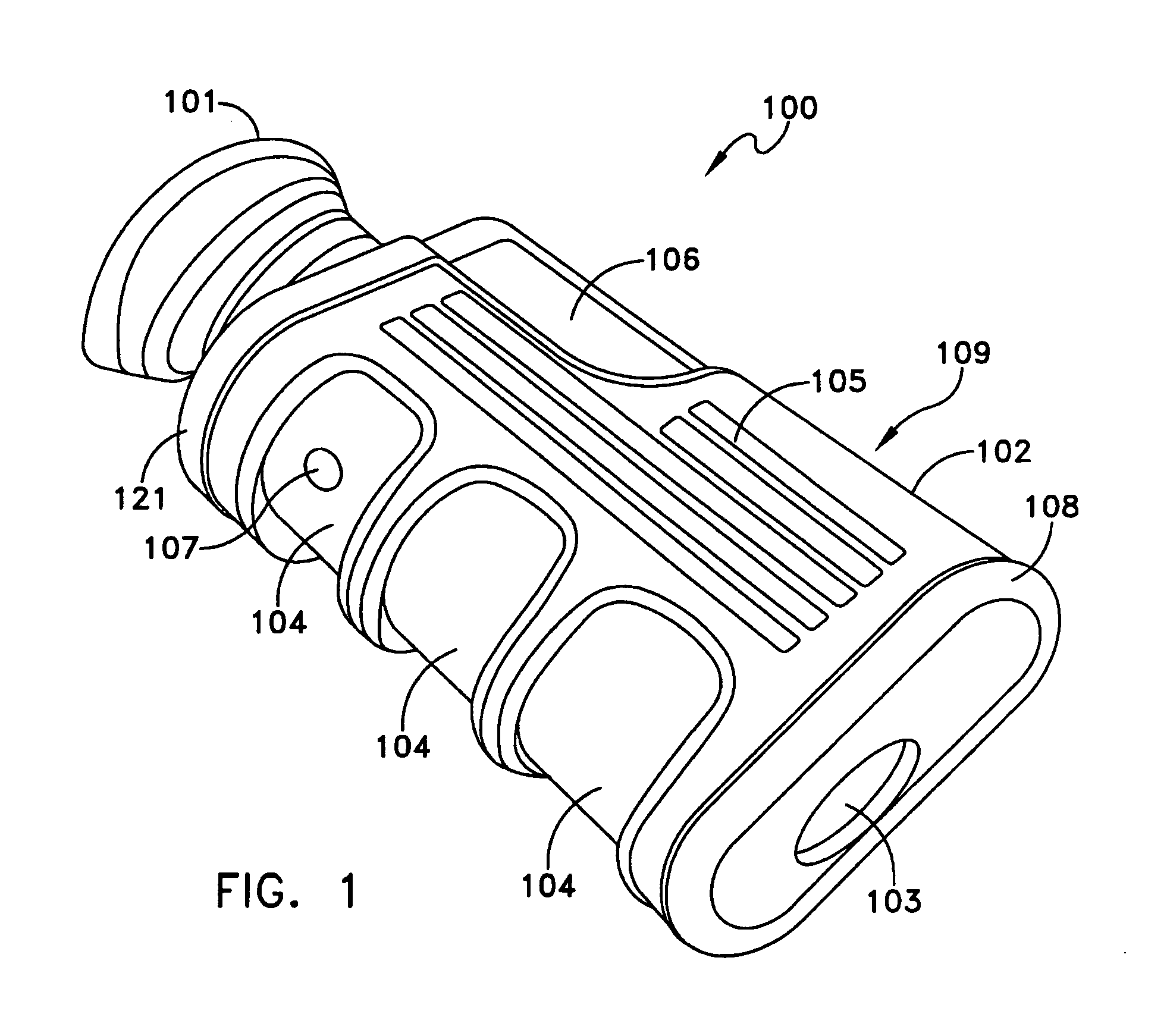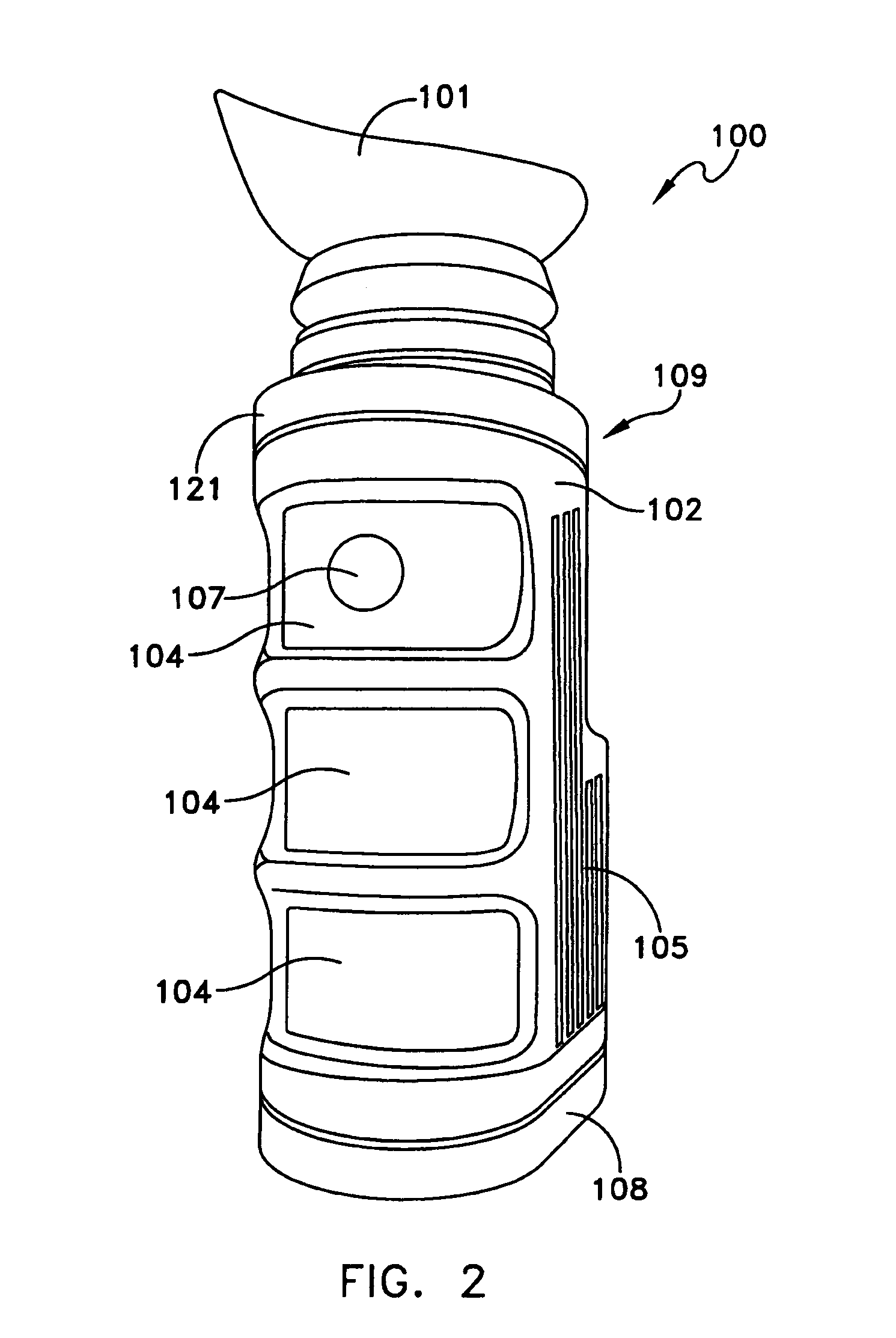Ruggedized digital low-light viewing device
a digital low-light viewing and rugged technology, applied in the field of optical devices, can solve the problems of poor quality and/or limited user capabilities, low-light viewing devices for image intensification low-light viewing devices are not the current low-light viewing devices manufactured are neither affordable nor easily adapted to non-military use, etc., to achieve excellent low-light performance, reduce cost, and facilitate the effect of holding
- Summary
- Abstract
- Description
- Claims
- Application Information
AI Technical Summary
Benefits of technology
Problems solved by technology
Method used
Image
Examples
Embodiment Construction
[0026]To address the problems of the prior art, the present invention provides a passive imaging ruggedized low-light viewing device capable of converting low-intensity visible light and infrared energy into a visible image. A digital low-light viewing assembly consistent with the present invention generally includes a low-light infrared camera having still / video image capture functionality, an LCD, OLED LCOS, CRT or plasma display and eyepiece lens, a zoom lens assembly, control electronics with one or more multi-position operator switches capable of being manipulated via a single digit of a user's hand while the device is being operated and the target viewed by the user, and standard batteries, all encased in an easily assembled waterproof housing, as will be described in further detail below.
[0027]With reference now to FIGS. 1 through 6, various external views of an exemplary low-light vision assembly 100 consistent with one embodiment of the present invention are illustrated. As...
PUM
 Login to View More
Login to View More Abstract
Description
Claims
Application Information
 Login to View More
Login to View More - R&D
- Intellectual Property
- Life Sciences
- Materials
- Tech Scout
- Unparalleled Data Quality
- Higher Quality Content
- 60% Fewer Hallucinations
Browse by: Latest US Patents, China's latest patents, Technical Efficacy Thesaurus, Application Domain, Technology Topic, Popular Technical Reports.
© 2025 PatSnap. All rights reserved.Legal|Privacy policy|Modern Slavery Act Transparency Statement|Sitemap|About US| Contact US: help@patsnap.com



